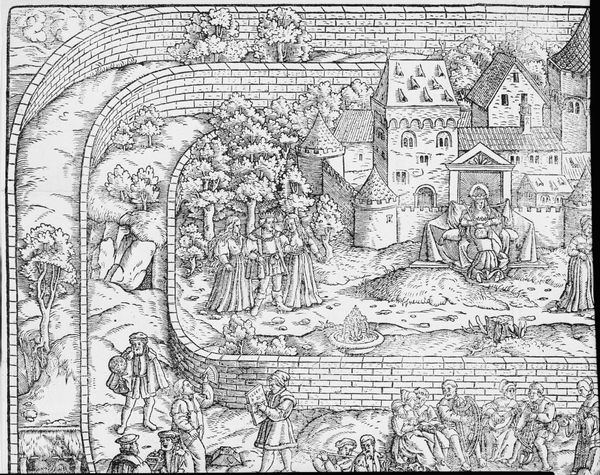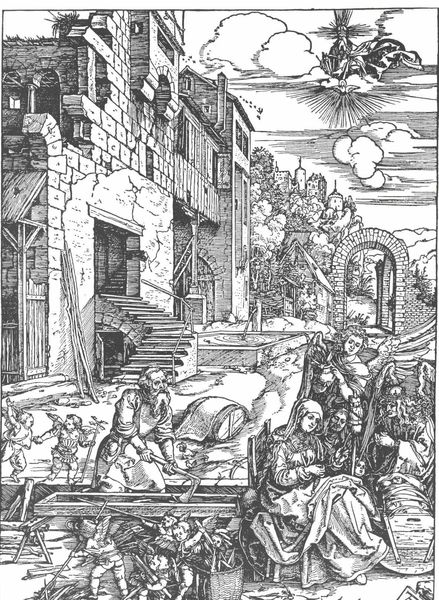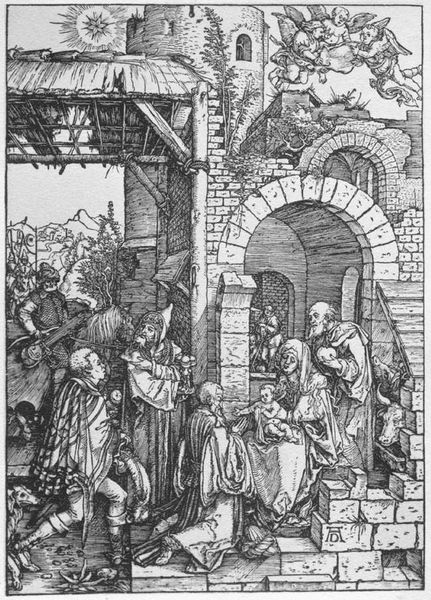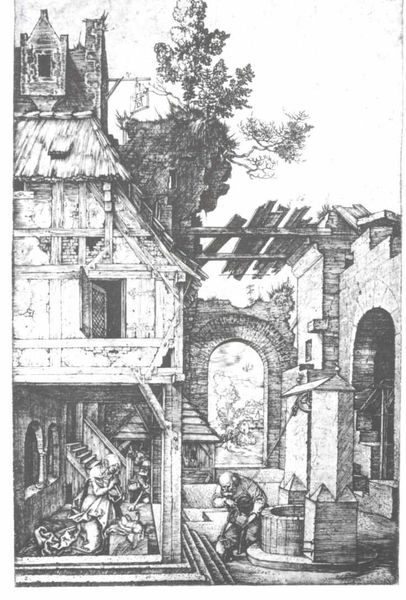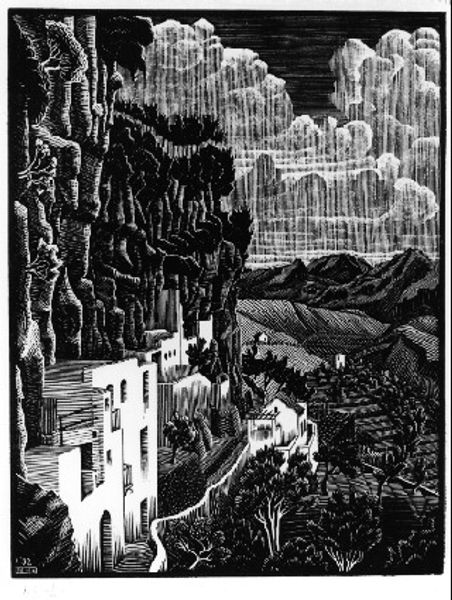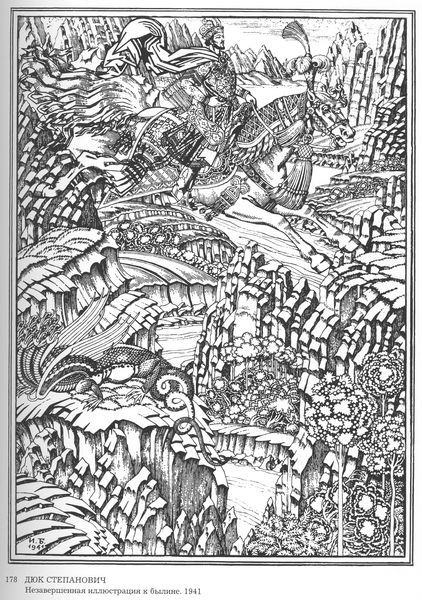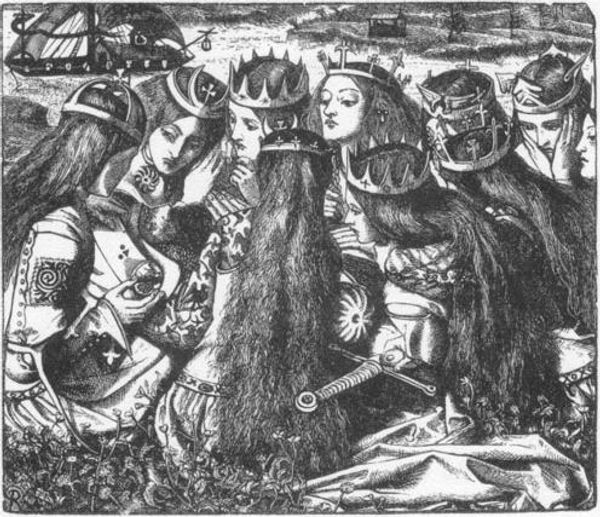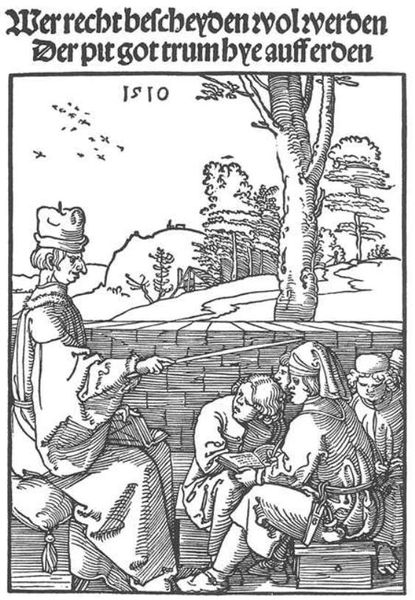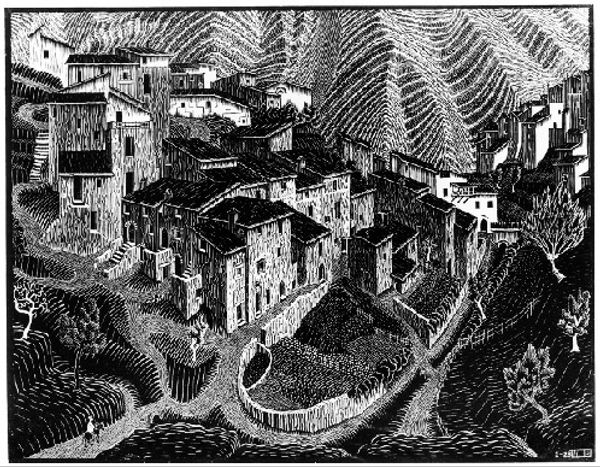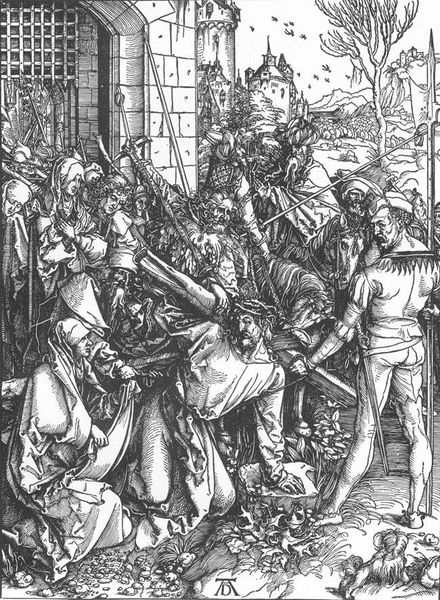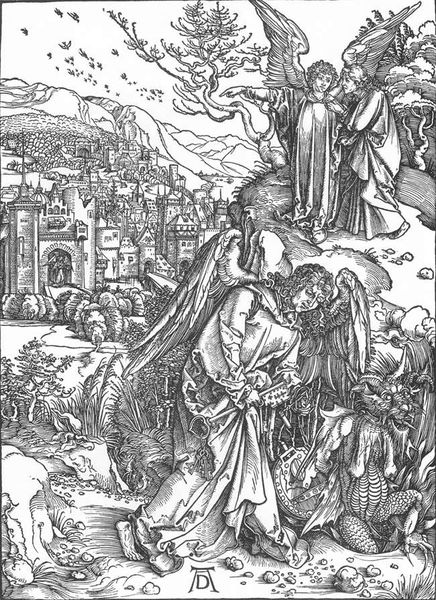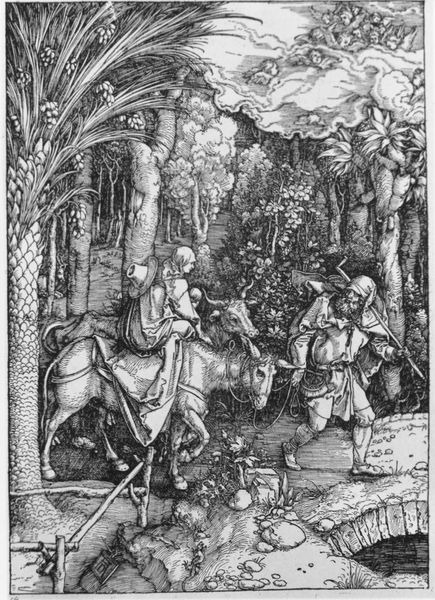
Copyright: M.C. Escher,Fair Use
Editor: Here we have M.C. Escher's "Cloister near Rocca Imperiale, Calabria," a drawing from 1931. The crisp black and white gives it an almost architectural feel, but the gnarled tree in the foreground disrupts that a little. What do you see in this piece that stands out from a purely formal perspective? Curator: Immediately striking is Escher's manipulation of perspective and form within a representational style. The composition exhibits a compelling tension. Note how the solidity of the cloister's architecture, meticulously rendered, is juxtaposed with the organic, almost writhing form of the tree. Editor: Yes, the tree feels much more gestural and expressive than the precise lines of the building. Curator: Precisely. This interplay of organic and geometric shapes invites us to consider their formal relationship. Examine the tonal range; the stark contrasts between light and shadow heighten the three-dimensionality of the forms, even as the flattening effect of the black and white medium creates a somewhat surreal ambience. Observe also how Escher uses line weight to suggest depth. He challenges our perception. Are we looking at a landscape or a study of geometric forms? Editor: I hadn’t really considered how much the lack of color contributes to that feeling. So, the very elements that create the image also slightly distort our understanding of it. Curator: Precisely. This subtle destabilization is characteristic of Escher’s engagement with the structural possibilities of visual representation. The image invites the viewer to actively decode the formal elements at play. Editor: I see what you mean! Looking closer, it’s less a picture and more of an intricate construction of contrasting forms and perspectives, that just happens to look like a place. Thank you. Curator: A fruitful observation. Considering this tension has shifted my reading, too.
Comments
No comments
Be the first to comment and join the conversation on the ultimate creative platform.
